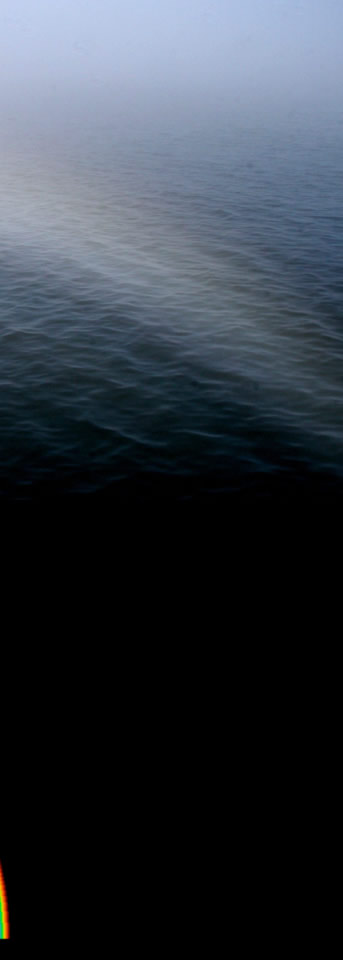 |
 |
 |
 |
| Bay of Fundy Fogbow - Imaged during a ferry crossing by Alan Clarke of the University of Calgary. ©Alan Clarke, shown with permission. The small mist droplets producing the fogbow were in a thin layer close to the cold sea surface. Whether we see a broad pastel hued fogbow or a narrow and bright coloured rainbow depends entirely on the size of the water drops making it. The ray path is the same, refraction on entering, internal reflection and more refraction and colour dispersion on leaving. But light waves do not follow precise geometric paths. Their diffraction and interference becomes ever more significant as the drop shrinks and approaches the length scale of the light waves. The Airy theory simulations show the increasing width of bows as drops get smaller and the growing evidence of wave diffraction effects. In fact, diffraction and supernumerary fringes are produced by even the largest raindrops and we would easily see them if the sun's disk did not blur them and the drops were reasonably same sized.. |
 |
 |
 |
 |

| About - Submit | Optics Picture of the Day | Galleries | Previous | Next | Today |